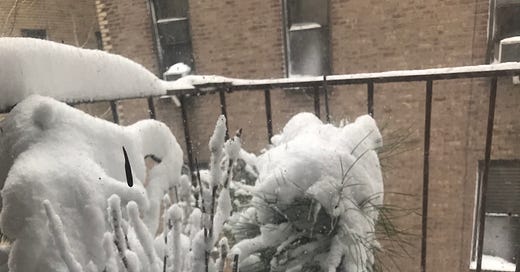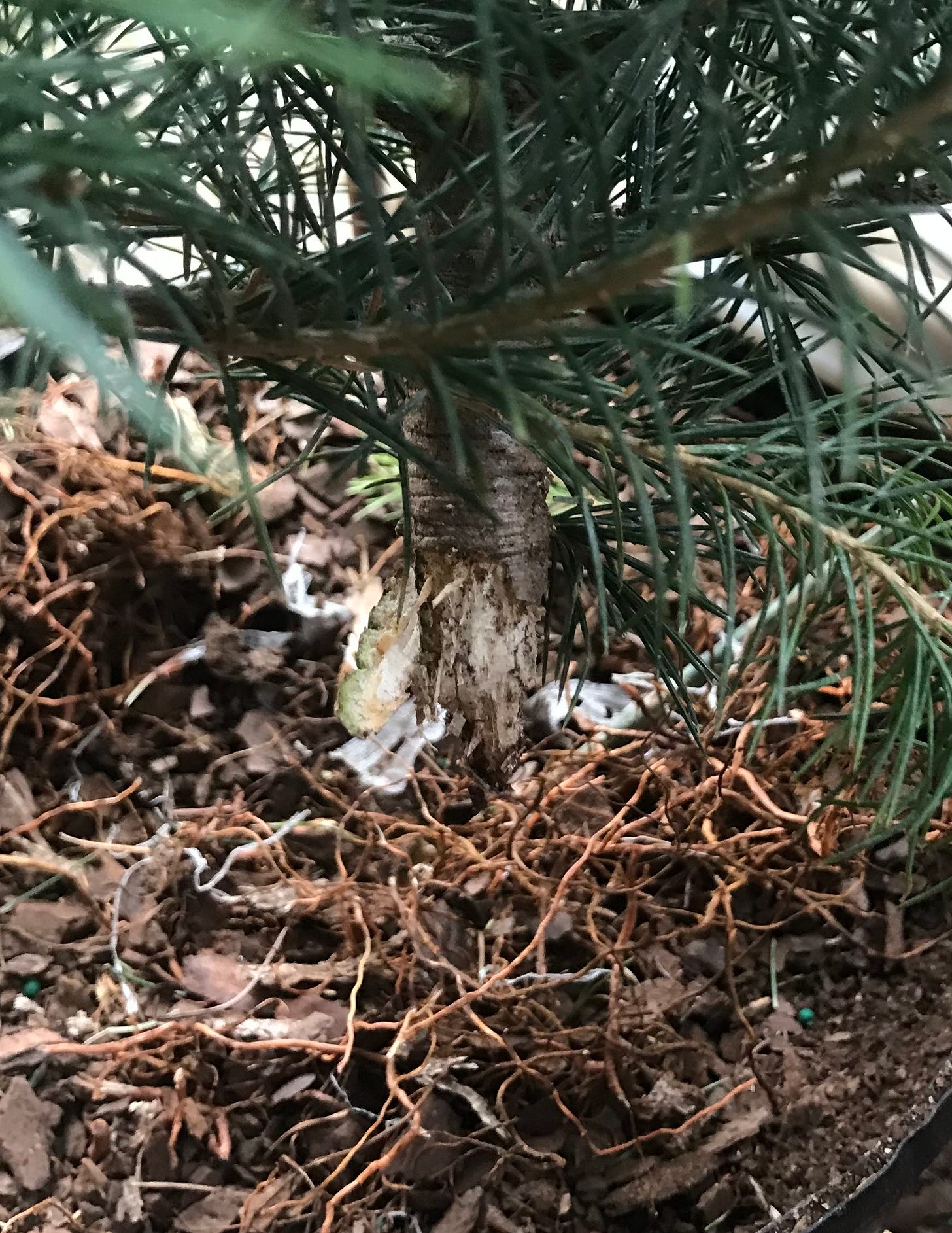This one’s gonna be a little longer, I have some stuff to work out!
The snow had my bonsai collection looking like an ice cream sundae. As I stood there, transfixed by the drifts of marshmallow sauce, I realized one of my trees was listing to the side. I figured it was just the trunk bending under the weight of the snow.
A few days later, the snow melted. The tree remained askew.
I discovered the neighborhood squirrels had assaulted my cedar. They ripped out all the roots and cracked the trunk in two. This is their second attack; they also killed a beloved tea plant last summer.
Metabolically, the tree will persist for a few weeks, but it’s already dead.
It’s strange, the parasocial bond you develop with a tree under your care. This was a deodar cedar, native to the Himalayan foothills. Before covid, I’d been planning to visit some tea gardens in that region. Stuck in quarantine instead, I found myself idly reaching for the cedar’s fluffy fronds, to comfort myself with thoughts of other places.
I asked my plant rabbis to sit virtual shiva with me. My friend Kat Kinsman, who’s running a whole citrus grove at home, told me she recently mourned the loss of a Key lime tree. “I know this sounds ridiculous,” she said, to feel so strongly for one of two dozen trees while still mourning her mother’s death from covid six months earlier. “I acknowledge every blossom, every fruit, every shocking new banana leaf as a little victory—but that means the loss feels just as palpable.”
One of my bonsai goals is to improve my relationship with death. I’ve been thinking a lot about acceptance the past year—what it means, who it’s for, how we understand it. Death presents the ultimate acceptance. We all have to accept death, because there’s nothing else to do about it. And death accepts us all, no matter what we’ve done.
There are lessons to learn from death. Horticulturally this is certainly the case; I’ll be investing in a decoy owl and some squirrel repellants. But death is usually senseless. The trick is accepting that too.
My friend Alex Testere makes wonderful art about gardening, including the illustration above. Plants teach him about his personhood, he said.
Plants’ cycles of growth and rest and death and rebirth are the same basic cycles of our own lives. But it can be so hard to plug into them because we’re trapped by our human perspectives. I think of Treebeard [a walking, talking tree in Lord of the Rings] telling Merry and Pippin not to be so hasty. And that anything worth saying is worth taking a very long time to say.
The forums say that deodar cedar isn’t great for bonsai. Its needles are relatively long, which disrupts the illusion of scale, and the branches get lanky. I don’t know yet if I’ll replace the cedar or look for a more bonsai-worthy specimen. I’m trying to not make any quick decisions. I want to feel better without resorting to buying something.
I got this tree on deep discount when I knew almost nothing about bonsai. I’d planned to start work on it in spring, to practice trimming branches to encourage new budding. Fortunately, I can still do that, now with no risk of killing a tree. I also want to whittle the trunk into a nice pokey stick.
If I didn’t buy the cedar, I wouldn’t have learned it was possibly a mistake to buy it. Maybe that’s enough. The tree brought me joy while it was alive. Now it’s dead. Imperceptibly, I am changed.
Tree reading
Thanks to Linda Egbuna’s alluring essay about ofada stew for Smartmouth, I got to learn about emu (aka oguro), a drink made from fermented palm tree sap and enjoyed in West Africa. That sent me down a fun rabbit hole. This article from 1976 is a good start for your own. [New York Times]
r/TreesSuckingOnThings is an essential follow. [Reddit]





